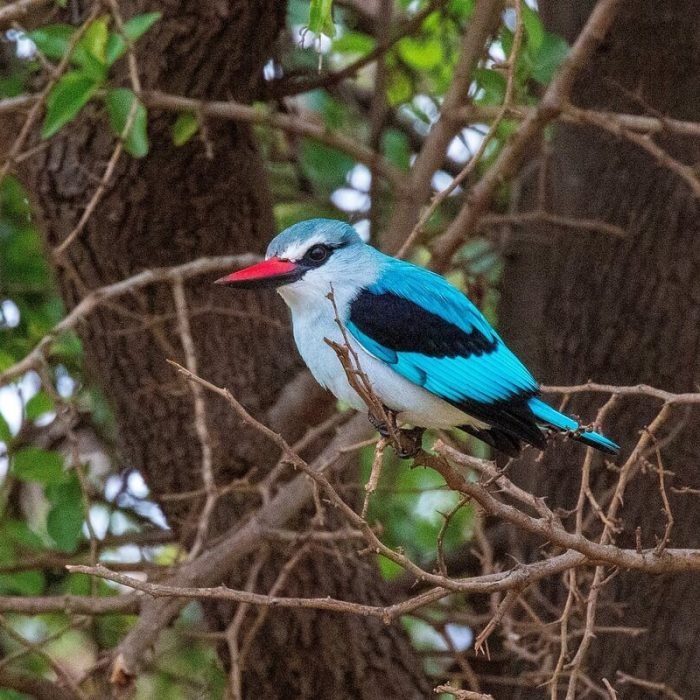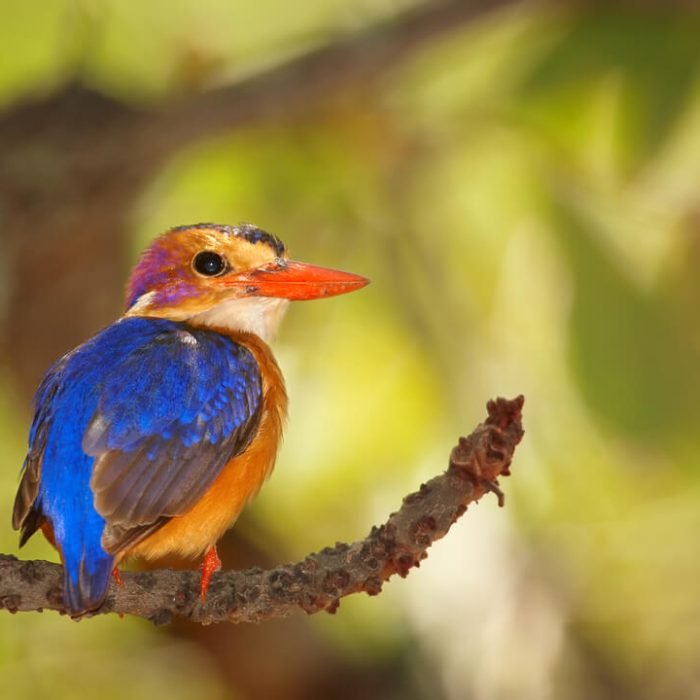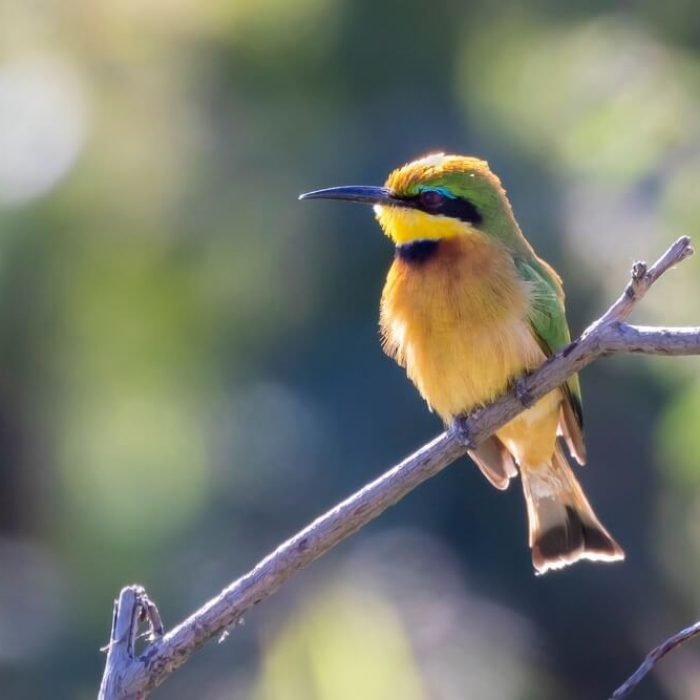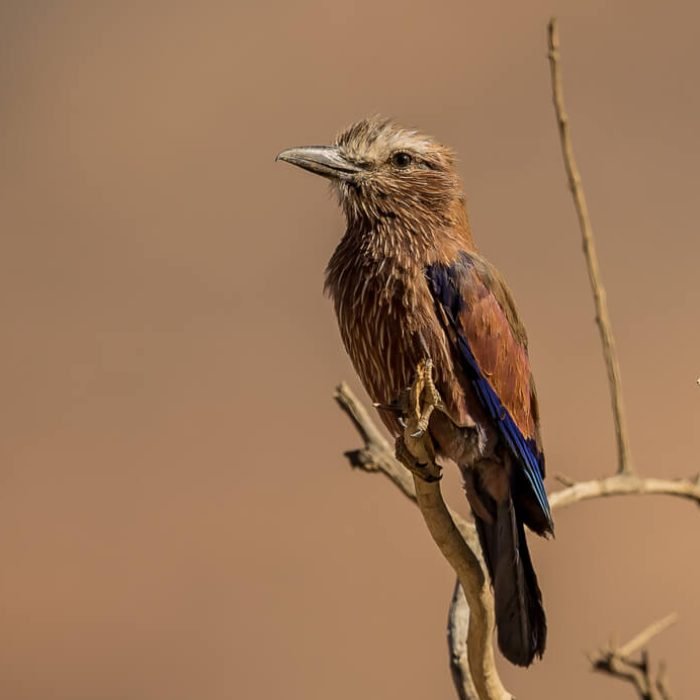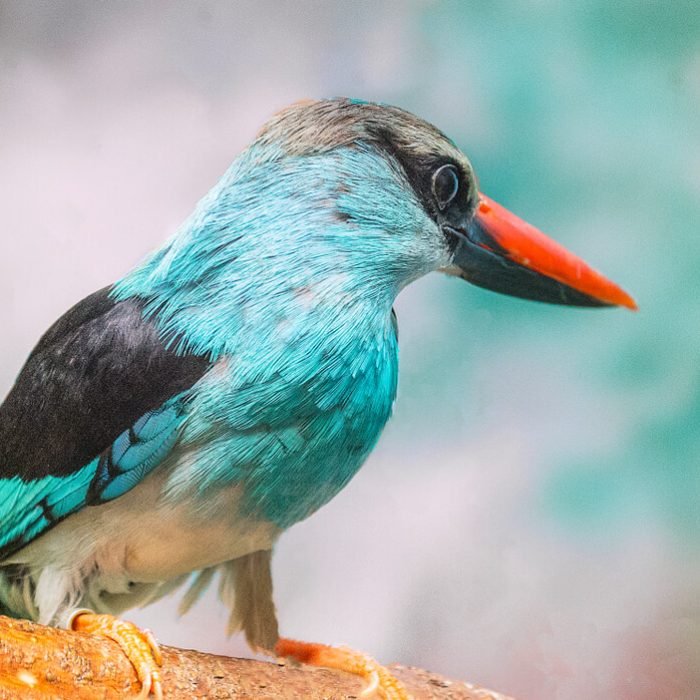European roller
- Coracias garrulus
- IUCN Status: Least Concern
- Trend: decreasing
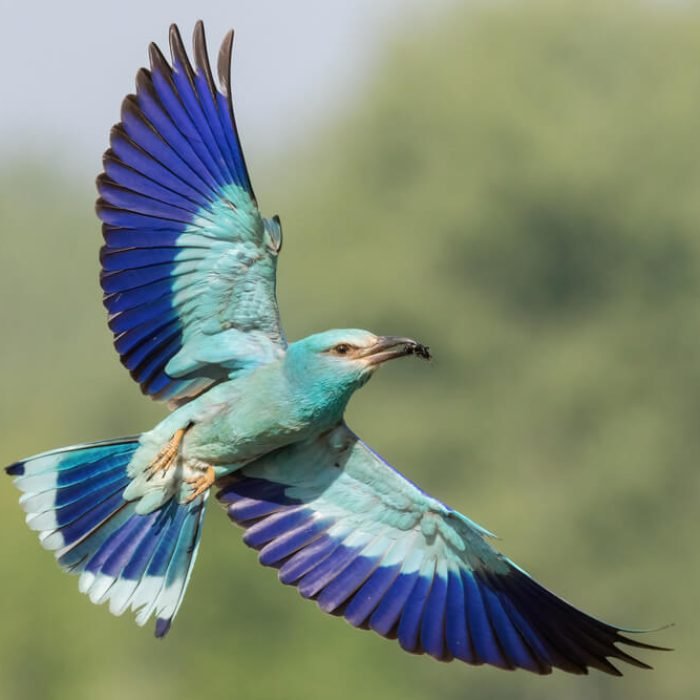
General Information
The European roller (Coracias garrulus) is the only member of the roller family breeding in Europe.
Its range extends into the Maghreb, West Asia and Central Asia. It winters in southern Africa, primarily in dry wooded savanna and bushy plains. It occurs in a wide variety of habitats, but avoids treeless plains. It usually nests in tree holes.
Description
The European roller is a stocky bird, the size of a Eurasian jay. It is mainly blue with an orange-brown back.
The European roller is striking in its strong direct flight, with the brilliant blue contrasting with black flight feathers. Sexes are similar, but the juvenile is a drabber version of the adult. The display of this bird is like that of a lapwing, with the twists and turns that give this species its English name.
The call is a harsh crow-like sound. It gives a raucous series of calls when nervous.
Fun Facts
The European roller is a host of the Acanthocephalan intestinal parasite Moniliformis gracilis.
Ecology and Behaviour
The European roller chick will vomit a foul-smelling orange liquid onto itself to deter a predator. The smell also warns the parents on their return to the nest.
Diet
Rollers often perch prominently on trees, posts or overhead wires, like giant shrikes, whilst watching for the large insects, small reptiles, rodents and frogs that they eat. The diet of adult rollers is dominated by beetles, whereas nestlings mostly eat Orthoptera, such as grasshoppers and bush crickets.
Reproduction
The nest site is usually in a natural cavity in a tree or in a hole excavated by a woodpecker. It is typically located 5–10 m above the ground. Pairs sometimes use a cavity in rocks or buildings and may occasionally excavate a hole in a sandy bank. The hole is unlined. The clutch is 2 to 6 white smooth glossy eggs that measure 35 mm × 28 mm. They are laid at intervals of two or occasionally three days. They are incubated by both sexes but mainly by the female starting before the clutch is completed. They hatch after 17 to 19 days. The young are cared for by both parents but usually the male passes food to the female. The nestlings fledge after 26 to 27 days. Only a single brood is raised each year, but a replacement clutch is laid if the first is lost. European rollers generally first breed when they are two years old.
The maximum age recorded from ring-recovery data is 9 years and 2 months for a bird shot in Poland.
Conservation
The Eurasian roller has an extensive distribution in Europe and western Asia, and its European breeding population is estimated at 159,000 to 330,000 birds. When Asian breeders are added, this gives a global total population of 277,000 to 660,000 individuals. There have been fairly rapid population declines across much of its range, so it was formerly classified as near threatened by the International Union for Conservation of Nature in 2005; it has, however, been downlisted to least concern in 2015, as population development was judged to not meet the criteria for a more urgent rating at this time. The European population declined by 25% between 1990 and 2000. The northern areas of the breeding range have fared worst, with numbers in the Baltic states and northern Russia collapsing, and no birds left breeding in Estonia.
Threats include hunting while on migration around the Mediterranean, and large numbers, possibly in the thousands, are killed for food in Oman. Agricultural practices have led to the loss of trees and hedges which provide potential nest sites and perches for hunting, and pesticides have reduced the availability of insect food. At locations where foraging resources are abundant, providing nest boxes can be a useful short-term conservation solution; however, in other locations foraging habitat restoration is more important.
Distribution and Habitat
The European roller is a bird of warmer regions. The nominate subspecies breeds in northern Africa from Morocco to Tunisia, in southern and east-central Europe, and eastwards through northwestern Iran to southwestern Siberia. The subspecies C. g. semenowi breeds from Iraq and southern Iran east through Kashmir and southern Kazakhstan to Xinjiang. The European range was formerly more extensive, but there has been a long-term decline in the north and west, with extinction as a nesting bird in Sweden and Germany. The European roller is a long-distance migrant, wintering in Africa south of the Sahara in two distinct regions, from Senegal east to Cameroon and from Ethiopia west (with observations in the Degua Tembien mountains) to Congo and south to South Africa. Some populations migrate to Africa through India. A collision with an aircraft over the Arabian Sea has been recorded.
It is a bird of warm, dry, open country with scattered trees, preferring lowlands, but occurs up to 1,000 m in Europe and 2,000 m in Morocco. Oak and pine woodlands with open areas are prime breeding habitat, but farms, orchards and similar areas with mixed vegetation are also used. In Africa, a similarly wide range of dry, open land with trees is used. It winters primarily in dry, wooded savanna and bushy plains, where it typically nests in tree holes.
References
Share:
- Kingdom: Animalia
- Phylum: Chordata
- Class: Aves
- Order: Coraciiformes
- Family: Coraciidae
- Genus: Coracias
- Wingspan: 52 to 58 cm

